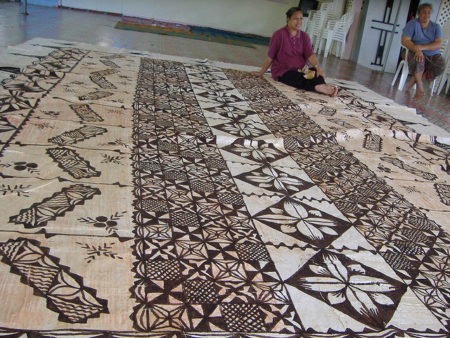- “Friends don’t let friends make bar plots.” Of course they don’t.
- Friend also don’t let friends hype the carrot and cassava genomes.
- “The food of the true revolutionary is the red pepper. And he who cannot endure red peppers is also unable to fight:” chili con China.
- Salvatore Ceccarelli, who should know, on the centrality of seed. And the guys from Experimental Farm Network would agree.
- Yes, you can now have organic tej.
- “In theory…the undoubted value of these natural treasures should be reflected in their price, which should rise steeply as they become scarcer… In practice, natural assets are often hard to price well, if at all.”
- A “Himalayan solution” for pomegranate breeding.
- Nutsedge definitely needs a new name.
- First formal record of the baobab in Uganda.
- Wind-resistant tree germplasm for the Pacific. Much needed.
Brainfood: Old chestnuts, Seed networks, Seed health, Soybean GWAS, Quinoa ABS, Taro breeding
- Mapping the Genetic Diversity of Castanea sativa: Exploiting Spatial Analysis for Biogeography and Conservation Studies. Mapping genetic data is both fun and instructive.
- Effects of farmer social status and plant biocultural value on seed circulation networks in Vanuatu. Big Men control Important Plants.
- Diagnostics of Seed-Borne Plant Pathogens for Safe Introduction and Healthy Conservation of Plant Genetic Resources. Genebanks need seed health labs.
- Characterization of Disease Resistance Loci in the USDA Soybean Germplasm Collection using Genome-wide Associations. Phenotypic data in GRIN meets SNP data, hilarity ensues.
- The global expansion of quinoa: trends and limits. From 8 to 75 countries in 35 years. But need new arrangements for access and benefit sharing for genetic resources.
- Evaluation of Vegetative Growth, Yield and Quality Related Traits in Taro (Colocasia esculenta [L.] Schott). A lot of the characters you want to improve are strongly heritable.
Tapping into tapa memories
The announcement of a fascinating new project on Kew’s tapa cloth collection from the Pacific is a great opportunity to remind myself about this wonderful specimen I encountered on Tonga a few years ago. Yes, everything is about me in the end.

Nibbles: Coffee strategy, Agroforestry, Superfoods, Cyperus, Potato history, Precious tea, Wheat disease, Crowdfunding conservation
- Strategizing about coffee. Over cappuccinos, I suspect.
- Treesilience. I like that.
- Enough with the superfoods already.
- Which is not something anybody ever called tiger nuts.
- You can now officially blame the potato for the fall of civilization.
- A really expensive cup of tea.
- Wheat blast reaches Asia.
- Crowdfunding tree conservation on Hawaii.
Brainfood: Sesame diversity, Teff & drought, Semen bank, Forest genomic monitoring, Sahiwal cattle status, Genomic prediction, Ecuadorian homegardens, Spinach association mapping, ICRISAT pigeonpea & pearl millet, Women & milpa, African rice at AfricaRice, Bacteria helping wheat
- Analysis of Genetic Diversity and Population Structure of Sesame Accessions from Africa and Asia as Major Centers of Its Cultivation. Strong geographic structure, and more diversity in Asia than Africa.
- Performance of Tef [Eragrostis tef (Zucc.) Trotter] Genotypes for Yield and Yield Components Under Drought-Stressed and Non-Stressed Conditions. Out of 144 genotypes, 15 were good in ideal conditions, 8 under stress, and none, alas, in both cases.
- Genome resource banks pay conservation dividends. Banked semen from “genetically valuable” individuals used to slightly raise diversity in captive populations. Of black-footed ferrets.
- Conservation and Monitoring of Tree Genetic Resources in Temperate Forests. Theory.
- Logging by selective extraction of best trees: Does it change patterns of genetic diversity? The case of Nothofagus pumilio. Praxis: maybe.
- Population structure and demographic trends of the registered Sahiwal cattle in Kenya. It’s losing diversity, so Something Must Be Done.
- Genomic Prediction of Gene Bank Wheat Landraces. It’s not perfect, but not bad either.
- Plant diversity and ecosystem services in Amazonian homegardens of Ecuador. Ethnicity is the stongest determinant of floristic composition.
- Association mapping of leaf traits in spinach (Spinacia oleracea L.). “Five, seven and 14 SNPs were identified to be associated with surface texture, edge shape and petiole colour, respectively.”
- Pre-breeding to expand primary genepool through introgression of genes from wild Cajanus species for pigeonpea improvement. Even the tertiary genepool is interesting.
- Characterization and genetic potential of African pearl millet named landraces conserved at the ICRISAT genebank. 5 agronomic clusters, each with good stuff, but different good stuff.
- The participation of farm women in the milpa system of the Yucatán, Mexico. …is minimal.
- Screening African rice (Oryza glaberrima) for tolerance to abiotic stresses: I. Fe toxicity. 3 out of 2000!
- Alleviation of salt stress by halotolerant and halophilic plant growth-promoting bacteria in wheat (Triticum aestivum). Not by a huge amount. For one wheat variety. In hydroponics.